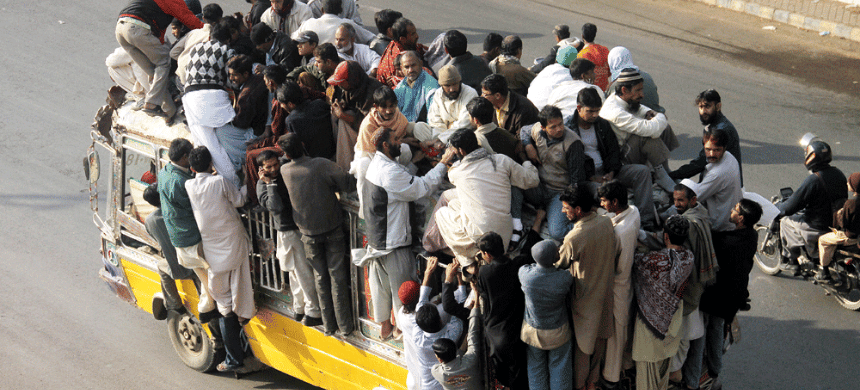The 2023 Population Census reveals that Balochistan has the highest population growth rate in Pakistan at 3.2%, while Khyber Pakhtunkhwa (KP) recorded the lowest growth rate at 2.38%.
According to the detailed report from the Pakistan Bureau of Statistics, Pakistan’s average annual population growth rate has fluctuated over the years, starting at 2.45% in 1961, peaking at 3.69% in 1972, dropping to 3.06% in 1981, and settling at 2.55% in 2023. The current growth rate in Pakistan ranks among the highest in both the region and the world, with the country positioned 191st globally. Only 27 countries, mainly in Sub-Saharan Africa, have higher growth rates. If this trend continues, Pakistan’s population is projected to double by 2050.
The latest census indicates that Pakistan’s population stands at 241,499,431, compared to 33,740,167 in the first census conducted in 1951, reflecting a more than sevenfold increase over the last 77 years. Punjab holds the largest share of the population at 52.9% in 2023, although this share has gradually declined since 1951. In contrast, Balochistan, which has the lowest population share among the provinces, has seen an increase from 3.5% in 1951 to 6.2% in 2023. The federal capital, Islamabad, while the smallest province by area, has also seen an increase in its population share.
Read More — Polio Eradication Takes Center Stage in Balochistan
From 2017 to 2023, Balochistan recorded the highest percentage increase in population at 20.75%, while KP saw the lowest at 15.08%.

Population density in Pakistan has risen significantly, from 42.4 persons per square kilometer in 1951 to 303.4 in 2023. Islamabad boasts the highest density at 2,609.1 persons per square kilometer, followed by Punjab at 622 persons per square kilometer, while Balochistan has the lowest density at 42.9 persons per square kilometer.
Among districts, the Karachi Division in Sindh is the most densely populated, with 5,779 persons per square kilometer, followed by Islamabad. Lahore Division in Punjab and Mardan Division in KP also have high population densities at 1,942 and 1,461 persons per square kilometer, respectively.
In Balochistan, most divisions, including Rakhshan, Kalat, Zhob, Mekran, and Sibi, exhibit low population densities ranging from 11 to 38 persons per square kilometer, highlighting the province’s vast and diverse terrain.
Karachi Central has the highest population density among districts, followed by Korangi, while districts like Awaran and Chagai have the lowest densities at just 6 persons per square kilometer, followed by Washuk (9), Kharan (17), and Zhob (22).
In Punjab, cities such as Lahore, Gujranwala, Faisalabad, Sialkot, and Multan are characterized by high population densities, while districts like Bahawalpur, Rajanpur, Khushab, Bhakkar, and Chakwal show lower densities.
Islamabad stands out with a high population density of 2,609 persons per square kilometer, reflecting its rapid growth.
In Sindh, the densely populated districts of Karachi are a result of the city’s status as the economic hub. Karachi Central leads with the highest density at 55,396 persons per square kilometer, followed by Korangi, Karachi East, Karachi South, and Karachi West. In contrast, the interior Sindh districts of Tharparkar, Sujawal, Jamshoro, Thatta, and Khairpur are more sparsely populated, indicating a more dispersed demographic pattern.
Overall, 61% of Pakistan’s population aged 10 and above is literate.











